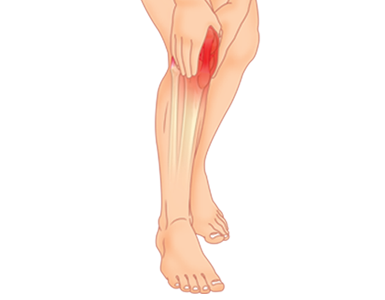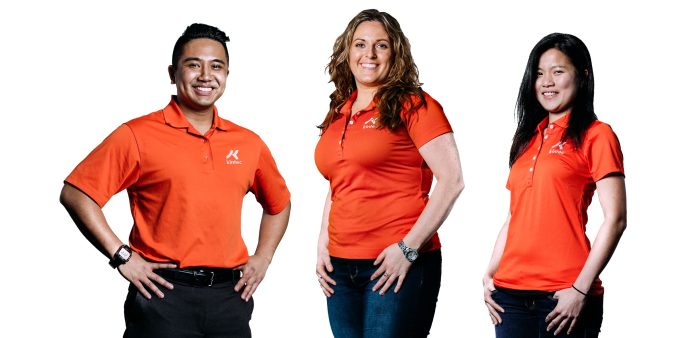Have a Doctor’s Referral?Book now

Also called Chondromalacia Patellae or Runner’s Knee—is the inflammation of the cartilage of the kneecap (patella), which prevents it from gliding smoothly within the femoral groove, found at the end of your thighbone (femur). When inflamed, the now softened cartilage of the patella doesn’t track properly in this groove, causing a roughening of the patella’s under surface and discomfort in the knee.
You will see a certified pedorthist who specializes in foot mechanics,
conditions, and conservative treatments.
The most common symptoms of Runner’s Knee are pain under and around the kneecap. It may be a sharp pain or dull ache made worse by kneeling down, by walking down stairs, by prolonged sitting, and/or during sporting activities that require squats or deep knee bends. Cracking or clicking sensations around the kneecap may also be experienced.
While there are many effective treatments for Runner’s Knee, you should combine as many treatment options as possible to hasten the healing and recovery process:
Consult your physiotherapist before starting any therapeutic strengthening and stretching exercise program. For your reference, here are some exercises that will help balance the musculature around your knee and help prevent further injury.
IlioTibial Band Stretches: Stand near a wall with the left leg crossed in front of the right. Lean the trunk towards the left and extend the right arm over the head. The goal is to feel a stretch over the right hip and down the outside of the right leg. Hold this stretch for at least 30 seconds. Repeat this on the opposite side and alternate 5 times each session. Perform this routine twice daily for the best results.
Quadriceps Stretch: Using a strap wrapped around the lower leg, bring it up until you feel a gentle stretch down the front of the thigh. Remember to remain standing straight pushing the hips forward. Hold this stretch for 20-30 seconds and repeat on the opposite side. Alternate 5 times per session and perform this routine at least twice a day.
Static Quad Extension: Sit on the floor with a pillow or rolled-up towel under your knee. With your toe pointed towards the midline of your body, push your thigh into the floor and lift your heel off the ground. Hold for five seconds and repeat 15 times per leg. Perform this exercise at least twice daily.
Shallow Squats: Using an exercise ball against a wall, do a controlled squat keeping your knees directly over your feet and in line with your second toe. Repeat 10-20 times per session and perform several times a day. To enhance the effect of this exercise place a firm nerf ball or pillow between the knees, holding it there while performing the movement
Often, doctors will recommend a combination of physiotherapy and proper footwear. Orthotics can also help to ensure proper foot/leg alignment.
For more reading on patellofemoral syndrome, read more from Kintec:
